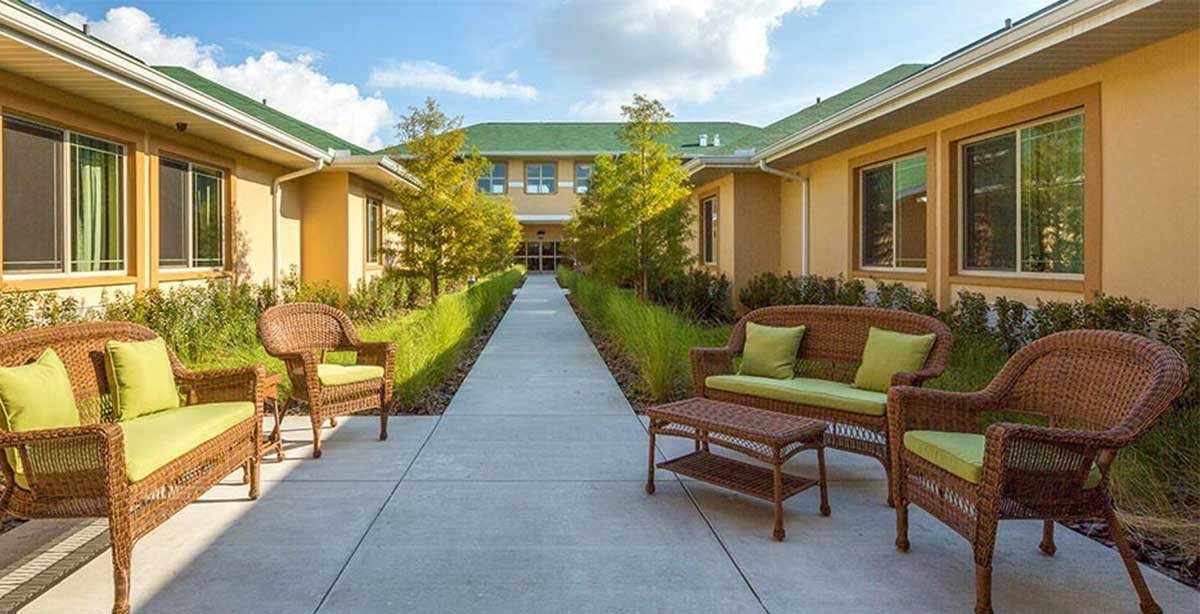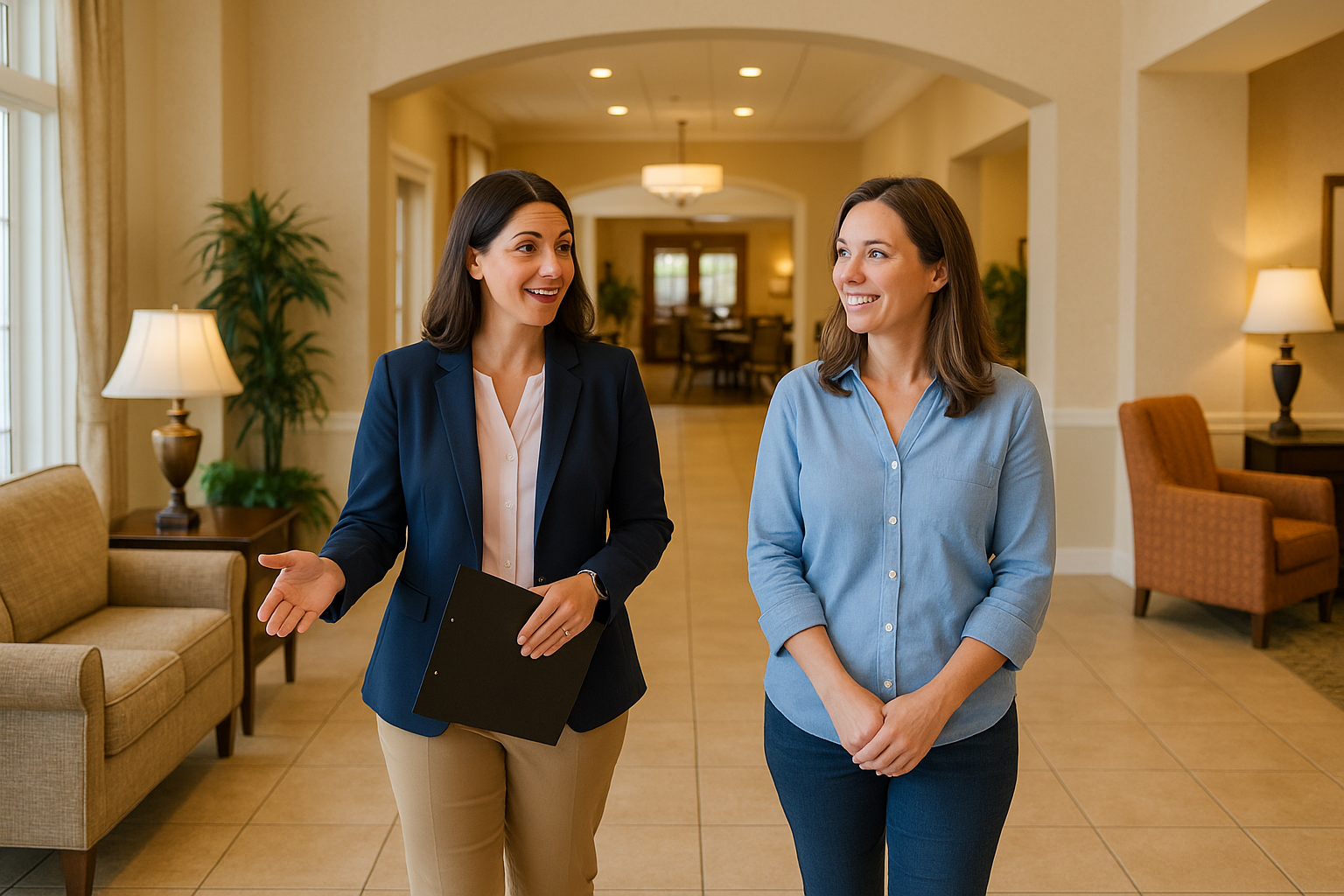For many families in Pinellas County, the search for senior living begins with a single, overwhelming question: "How are we going to pay for this?"
If your loved one is a Veteran or the surviving spouse of one, the answer often lies in a set of benefits they earned decades ago but never used. However, navigating the Department of Veterans Affairs (VA) is notoriously complex. In my work helping families find the right community, I often see people walk away from thousands of dollars in monthly support simply because they didn't understand how the system works.
This guide is designed to cut through the confusion. Based on the latest 2025 regulations, here is everything Pinellas families need to know about using VA benefits to fund Assisted Living and Memory Care.
Part 1: The "Two Pillars" of VA Support
The first step is understanding that the "VA" is not one single entity. In Pinellas County, there are two separate administrations that handle long-term care, and they work in fundamentally different ways.
Pillar 1: The Veterans Health Administration (VHA)
This is what most people know as "The VA"—the hospital system. In our area, this is the Bay Pines VA Healthcare System.
- What they provide: Direct medical services like doctors, prescriptions, and physical therapy.
- The Limitation: The VHA does not pay for room and board at an assisted living or memory care facility .
Pillar 2: The Veterans Benefits Administration (VBA)
This is the monetary arm of the VA. They do not employ doctors; they cut checks.
- What they provide: Tax-free cash payments paid directly to the Veteran.
- The Solution: This is the bucket that funds Assisted Living. The specific program is called the Aid and Attendance Pension, and it is designed to help cover the cost of care .
What "VA Benefit" Are We Talking About?
To understand the funding, you must distinguish between the two main "buckets" of VA money. They are completely separate, and confusing them is the #1 reason families get frustrated. For more information, visit: https://www.benefits.va.gov/pension/.
1. VA Disability Compensation (The "Injury" Check)
- What it is: Monthly tax-free pay for an injury or illness that happened during service (e.g., hearing loss, PTSD, knee injury).
- Does it pay for Assisted Living? Not directly. You can use the cash for anything, but the amount is based on the severity of the injury (0% to 100% rating), not your need for care.
- Can you get it? Only if you can prove your current medical issue was caused by your service years ago.
2. The Aid & Attendance Pension (The "Assisted Living" Check)
- What it is: A tax-free monthly pension for wartime Veterans (or their surviving spouses) who need help with daily care.
- Does it pay for Assisted Living? YES. This benefit is specifically designed to offset the cost of long-term care.
- Can you get it? Eligibility is based on financial need and medical necessity, regardless of whether your health issues are service-connected.
This guide focuses on the "Aid & Attendance Pension," as it is the primary funding source for senior living.
Part 2: How Much Does It Pay? (2025 Rates)
The Aid and Attendance (A&A) pension is a monthly cash benefit paid to wartime Veterans or their surviving spouses who require the aid of another person for daily activities. This information is according to https://www.va.gov/pension/veterans-pension-rates/
For the 2025 period (effective December 1, 2024), the maximum monthly tax-free payments are:
- Two Married Veterans: Up to $3,740 per month
- Married Veteran: Up to $2,795 per month
- Single Veteran: Up to $2,358 per month
- Surviving Spouse: Up to $1,515 per month
Important: This money is paid directly to the Veteran or spouse. You can use it to pay for the facility of your choice; you are not restricted to "VA facilities."
Part 3: The 3 Pillars of Eligibility
To qualify, a Veteran must generally meet requirements in three areas: Service, Medical, and Financial according to https://www.benefits.va.gov/pension/.
1. Service Requirements
You do not need to have been injured in combat to qualify. The requirements are:
- Active Duty: At least 90 days of active duty service.
- Wartime: At least one day of that service must have been during a recognized wartime period .
- Discharge: Must be any status other than "Dishonorable".
VA-Recognized Wartime Periods:
- World War II: Dec 7, 1941 – Dec 31, 1946
- Korean Conflict: June 27, 1950 – Jan 31, 1955
- Vietnam Era:
- Feb 28, 1961 – May 7, 1975 (if served in Vietnam)
- Aug 5, 1964 – May 7, 1975 (if served outside Vietnam)
- Gulf War: Aug 2, 1990 – Present
2. Medical Requirements (The "Need for Care")
The Veteran must show a clinical need for care. This is defined as needing assistance with Activities of Daily Living (ADLs), such as bathing, dressing, feeding, or toileting.
The "Protected Environment" Rule for Dementia If your loved one is physically capable (can walk and dress themselves) but has cognitive decline, they still qualify. VA regulations state that needing a "protected environment" to stay safe from hazards—which is exactly what Memory Care provides—meets the medical requirement for Aid & Attendance.
3. Financial Requirements (The "Math Secret")
This is where most families get discouraged incorrectly.
- The Asset Limit: For 2025, your net worth must be under $159,240.
- Crucial Exemption: Your primary home (on up to 2 acres) and one personal vehicle do NOT count toward this limit .
- The "Medical Expense" Loophole: The VA looks at your "Countable Income," which is your Gross Income minus your Unreimbursed Medical Expenses (UMEs).
- The Scenario: A Veteran earns $3,000/month.
- The Cost: He moves into a Memory Care community in Clearwater that costs $6,000/month.
- The Calculation: $3,000 (Income) - $6,000 (Care Cost) = -$3,000.
- The Result: The VA counts his income as $0. Because his medical expenses exceed his income, he qualifies for the maximum pension benefit .
Applying for VA benefits is about paperwork and timing. Follow these four steps in order to avoid delays and lock in your potential payment date.
Part 4: The Application Process: A Step-by-Step Walkthrough
Step 1: Lock in Your Date (Do This Today)
Before you gather a single receipt, you must tell the VA you are planning to apply. This "stops the clock" so that even if it takes you months to gather your documents, the VA will eventually pay you back to this date.
- Action: Download and file VA Form 21-0966 (Intent to File).
- Download Link: Get VA Form 21-0966 (PDF)
- Tip: You can fax this to the VA or drop it off at the County Veterans Services office listed below.
Step 2: Download Your Main Application
You will need one of the following two forms, depending on who is applying. This form asks for your military history, income, and net worth.
- If you are the Veteran: Use VA Form 21P-527EZ.
- If you are the Surviving Spouse: Use VA Form 21P-534EZ.
Step 3: Get the Doctor's Note (Critical)
You must prove that you need care. The VA does not just take your word for it; they require a specific medical form filled out by a doctor (MD or DO), Physician Assistant (PA), or Nurse Practitioner (APRN).
- Action: Have your doctor fill out VA Form 21-2680.
- Download Link: Get Medical Form 21-2680 (PDF)
- Crucial Detail: Ensure the doctor checks the boxes for "Assistance with Activities of Daily Living" (like bathing or dressing) or explicitly states the need for a "Protected Environment" if the patient has dementia.
- Note: If the applicant is already in a Nursing Home (Skilled Nursing), you also need Form 21-0779. Get Nursing Home Form (PDF)
Step 4: Gather Your "Future" Proof
The VA calculates your benefit based on what you will pay for care in the future, not just what you paid in the past. To get the maximum deduction, you must prove your recurring monthly costs.
- If moving to Assisted Living: Include a copy of the signed Resident Agreement that states the monthly rent and care fees.
- If using Home Care: Include a signed Care Contract from the agency that lists the hourly rate and expected hours per week.
For more information on the application process, visit: https://www.va.gov/pension/how-to-apply/
Part 5: The "Wait... Do I Need a Lawyer?" Checklist
While many families can apply on their own, there are specific "danger zones" where filing incorrectly can cost you money. This is where a specialized Elder Law Attorney becomes essential.
You likely NEED an Attorney if:
- You Have Savings Over $159,240: If you have more than this in assets, you cannot simply "give it to the kids" to qualify. This triggers a penalty period of up to 5 years. An attorney can help you create a Veteran Asset Protection Trust (VAPT) to legally protect those assets while still qualifying.
- You Own Multiple Properties: Your primary home is exempt. A second home or rental property is not.
- You Are Worried About Medicaid: VA rules and Florida Medicaid rules are different. Fixing your assets for one can sometimes disqualify you from the other.
You likely DO NOT need an Attorney if:
- Your Assets are Low: If you have less than $159k in assets (excluding your house/car) and your income is lower than your cost of care.
- You Just Need to File Forms: Do not pay a lawyer just to fill out Form 21-527EZ. The County VSOs listed below will do this for you for free.
Part 6: Pinellas County Resource Directory
A. Free Help (For Filing Claims)
Use these accredited government offices to file your "Intent to File" and standard applications at no cost.
- Pinellas County Veterans Services (Clearwater)
- Address: 2189 Cleveland St, Clearwater
- Phone: (727) 464-8460
- Pinellas County Veterans Services (St. Petersburg)
- Address: 501 1st Ave N, St. Petersburg
- Phone: (727) 582-7828
- Florida Dept. of Veterans' Affairs (Bay Pines)
- Address: 9500 Bay Pines Blvd, St. Petersburg
- Phone: (727) 319-7440
B. Paid Legal Help (For Asset Protection)
If you are over the asset limit, contact one of these local firms specializing in Elder Law and VA Benefits planning.
- Sean W. Scott, Elder Law Attorney
- Address: 3233 East Bay Drive, Suite 104, Largo, FL 33771
- Phone: (727) 539-0181
- Focus: Medicaid & VA Asset Protection.
- Mortellaro Law (Michelangelo Mortellaro)
- Address: 9800 4th St N, Suite 200, St. Petersburg, FL 33702
- Phone: (813) 367-1500
- Focus: Estate Planning & Veteran’s Benefits.
- DeLoach, Hofstra & Cavonis, P.A.
- Address: 8640 Seminole Blvd, Seminole, FL 33772
- Phone: (727) 397-5571
- Focus: Board Certified Elder Law & VA Planning.
- HKH Elder Law
- Address: 2033 54th Ave N, St. Petersburg, FL 33714
- Phone: (727) 343-8959
- Focus: Long-term care and Medicaid planning.
C. Placement Help (Finding the Facility)
- Home at Last Senior Placement Services
- Contact: (813)468-1893
- How We Help: We know which Pinellas communities accept the Aid & Attendance benefit and have experience working with Veterans. We can help you calculate your budget (Income + VA Benefit) and tour the best options for your specific needs.
Part 7: Your Action Plan (Start Today)
If you are considering Assisted Living, do not wait until the move-in day to start this process.
- File Form 21-0966 Today: This is the "Intent to File." It takes 15 minutes and locks in your start date. If your claim takes 8 months to approve, the VA will pay you a lump sum back to today .
- Audit Your Assets: Look at your total countable assets.
- Is it OVER $159,240? Call an attorney from List B immediately.
- Is it UNDER $159,240? Call Pinellas County Veterans Services (List A) to schedule a free appointment.
- Call Home at Last: Once you know your true budget (Income + Potential VA Benefit), let us help you find the community that feels like home.






